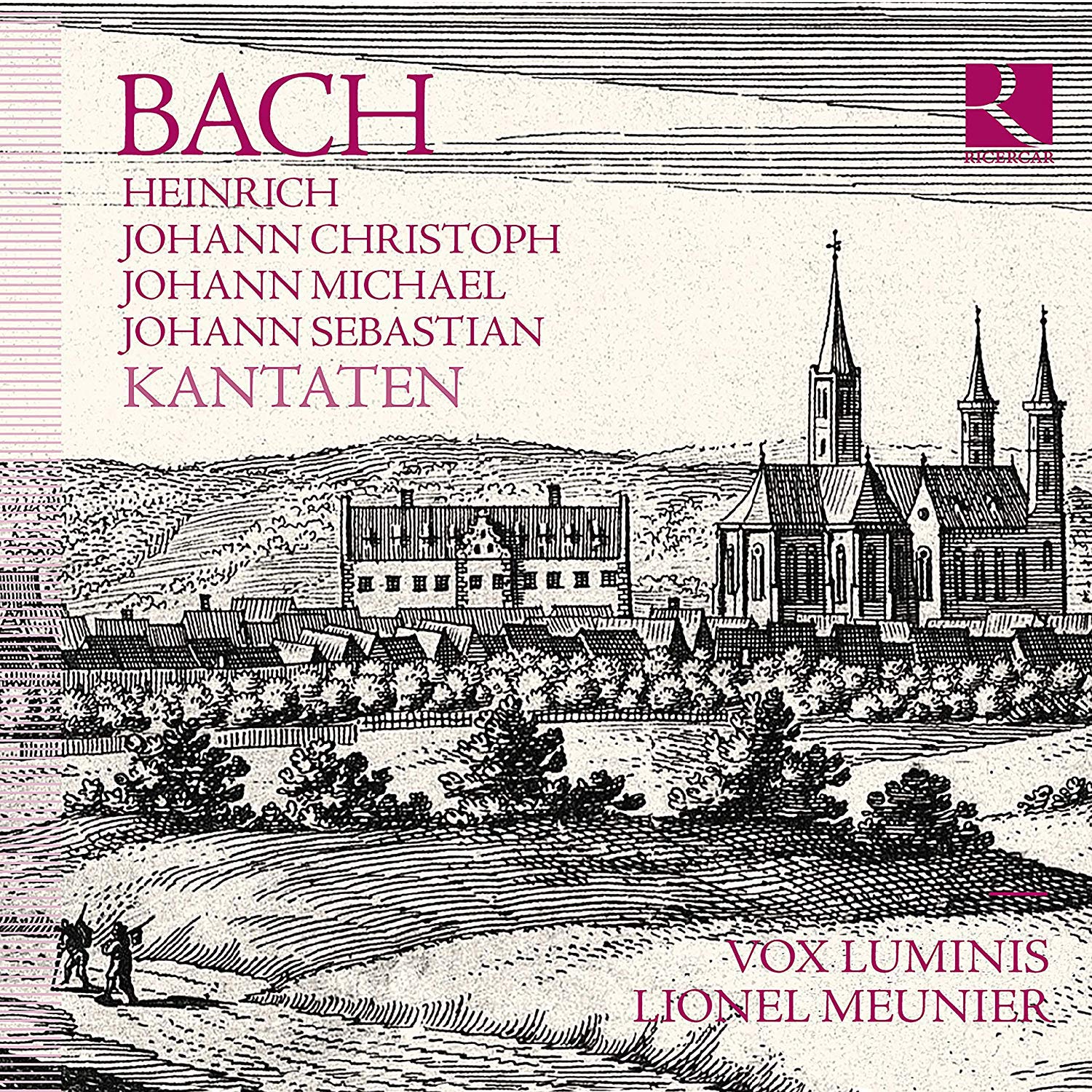Kantaten der Bach Familie
Vox Luminis, Lionel Meunier
Ricercar RIC 401. 66’30

Since Vox Luminis was formed around 15 years ago, they have established themselves as one of the leading performers of early music, usually just with choir and continuo, but also appearing with up to a full orchestra. Under their director, Lionel Meunier, their many award-winning CDs have highlighted fascinating areas of the repertoire, as does this one with its exploration of the sacred cantatas of Bach’s earlier family. Although we have long given up the notion that Bach sprung in the musical world from nowhere, our knowledge of the pre-Bach Bach’s and the musical world in Thuringia and Saxony that nurtured the Bach brood over many generations is still rather limited. This recording reveals just some of the extraordinary riches that await exploration from the 17th century Bachs. The focus is on three pre-JS Bach’s,
The pieces are well-chosen to both provide contrast and also the developing style of sacred cantatas during the 17th century, towards the first version of JS Bach’s early Christ lag in Todesbanden (BWV 4). Heinrich Bach is the earliest composer, here represented by his Ich danke dir Gott, a ‘spiritual concerto’ or ‘church cantata’. The instrumental writing, focussed on two violins, play throughout the piece, the voices intervening in homophonic passages alternating with florid virtuoso sections.
Johann Michael Bach has two pieces, the multi-sectional opening Ach bleib bei uns, Herr Jesu Christ contrasts choral and solo moments with interventions from two violins. In form, it is similar to a Prelude & Fugue of the North-German type than JS Bach knew in his youth Herr, der König freuet sich again features the violins, the other strings and continuo being in an accompanying role. The vocal forces are five soloists and five ripieno voices that join in the tutti passages.
Programmes that combine lesser-known composers with JS Bach often reduce the former to a lower status than they deserve. Such is the quality of the music, and the performance, on this recording that the pieces by JS Bach relatives bear up well against his Christ lag in Todesbanden. Despite being a very early work (it is performed here in its original version dating from his Arnstadt period), it still stands as one of the masterpieces of Bach choral writing.
One prominent feature that sets this recording apart from others is the use of a ‘proper’ church organ rather than a little box organ. The effect is apparent right from the start. The solid and rich sound of the Principal and Gedackt stops and the 16′ pedal are what would have been expected and heard at the time, when musicians were generally gathered around a full-sized ‘west-end’ organ in performance. And when the organ increases its volume its presence makes a considerable difference to the overall sound. The excellent playing by Bart Jacobs includes several innovative and stylish continuo contributions as well as supporting the voices of a chorale line on the organ’s Trompete stop. The organ is the 2002 Thomas instrument in Notre-Dame de la Nativité in Gedinne, Belgium. It is an unusual design with 14 stops shared between two manuals and pedals.
It is perhaps invidious to pick out individual singers from a choir, but the four sopranos (Zsuzsi Tóth, Kristen Witmer, Stefanie True, Victoria Cassano) make particularly important and stylish contributions. The two principal violinists are Tuomo Suni and Jacek Kurzydło. As ever, Lionel Meunier’s direction, from within the choir), is exemplary, both in his balance of voices and his sensitive control of pacing.
The acoustics of Notre Dame, Gedinne, make for a fine recording venue, alongside having such an impressive organ. The CD booklet is comprehensive, with detailed information on the composers, the Bach family, and the individual pieces. More information and a link to the CD booklet can be found here.
